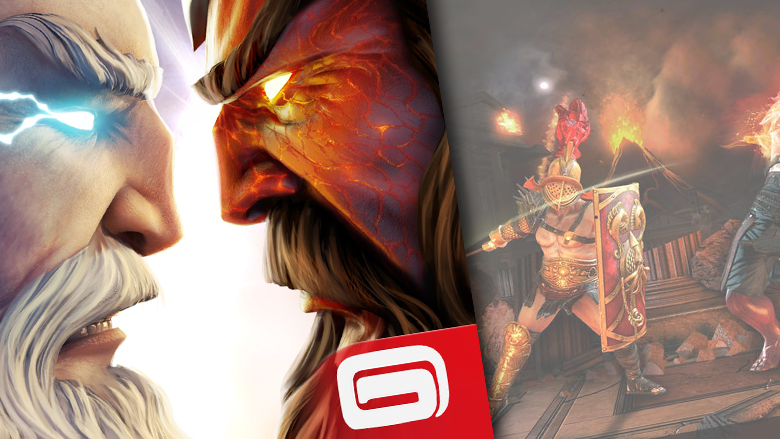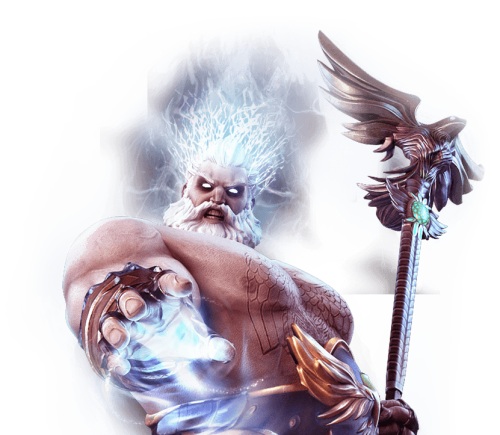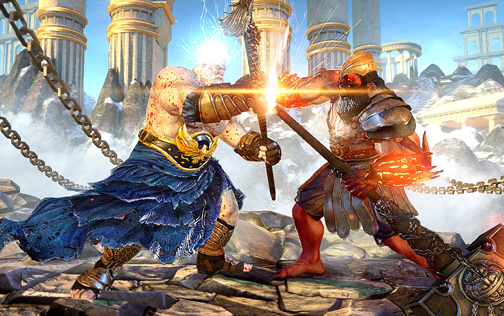At the end of December, Gameloft released the mobile fighting game Gods Of Rome. We talked about the game economy and asynchronous PvP with project manager Eduardo Oriza Seral.

Hi! Now it is considered that a good push on installations gives the use of licenses. Kabam, for example, used the Marvel world for his fighting game, and Warner Bros. for Injustice: Gods Among Us – the DS universe. You went a more original way – you decided to make a game based on myths. Why?
Hi! We started developing and designing the game a long time ago and decided from the very beginning that this game would be a fighting game in an antique setting. The spirit of that time, the characters, their armor, swords and shields, stories are great material to work with and from which you can create a beautiful and interesting game. We were initially confident that the game would be self-sufficient and it would not require any support from third-party franchises.
Were there any other options? Which ones?
In general, we first wanted to make a game about gladiators and their battles, to tell the story of a fearless warrior making his way as a forced warrior to freedom. And then we decided to add a little mythology and it started – new characters, new abilities, quests and history.
Continuing our conversation about mythology. I was very confused by one moment. There are Greek gods in the game – including, for example, Zeus and Hades. These are the Greek gods. Among the Romans, Jupiter took the place of Zeus, and either Pluto or Orc acted as Hades. Given that the game is dedicated to Roman mythology, a dissonance is created. What was it dictated by?
“Gods of the arena” use characters from a variety of mythologies, not only Roman. Rome in the game is a moment of history. The moment when a mighty army, brave gladiators and mythical gods were quite an ordinary phenomenon and, accordingly, often became the main theme in art. We also noticed that Jupiter very often continued to be called Zeus, and therefore decided to leave a more familiar name for this character.

Usually, the session of any fighting game is based on at least two victories (up to three battles). You have one battle in the single = one round. What made you go for such an innovation?
Indeed, but we should not forget that we are making a mobile game, and therefore it is necessary to understand the features of the platform. In our opinion, such mechanics are more suitable for playing on smartphones. Well, there is also a special PvP mode, there are battles with three rounds.
There are three resources in the game (energy, coins and crystals). Please tell us how they work and interact in the game with each other?
The energy in the game is needed to move from battle to battle. As the player’s level increases, the energy is replenished to the maximum, and its limit increases. It is replenished over time, or you can use game items to replenish your strength. These items often drop out during the game.
You can’t do without gold either. It is earned in battles and is used for the evolution of characters and the search for PvP opponents.
For diamonds, spheres with various useful content are opened. Diamonds are generously given in the story mode for passing (bonus diamonds are given for 100% completion of the chapter).
There are many heroes in the game. At the same time, you can get them either by buying / earning spheres, or by spending real money (in fact, the fourth full-fledged game resource). But there is a nuance, for real money you can buy only the hero that the game offers right now, in a specific period of time. Why couldn’t it be done so that initially all the characters were available for purchase for real money?
New characters can be obtained from daily free spheres, it just needs a little patience. Or you can actively participate in special promotions, where the rewards are just new characters and other bonuses. The game is designed so that each player can take part in all the events and discover the content gradually. Epic spheres allow you to slightly reduce the time it will take to open all the characters. If all the characters were made available at once, then the interest and effect of discovering something new in the game would disappear.

It is known that many fans of action games like to compete with each other. At the same time, in Gods of Rome, this opportunity is not revealed immediately. You need to reach the fifth level. This, as far as I can judge from my experience, is more than an hour and a half of play. Why couldn’t players be allowed to fight each other from the very beginning?
This solution is part of the phase learning system. If we immediately gave the player the opportunity to press all the buttons and participate in all modes, then it is likely that someone would get confused and refuse to play further at all. Now the training is going on gradually, but at a sufficient pace so that the player does not get bored.
Please tell us about your PvP. Is it synchronous or asynchronous? What made you choose this particular PvP model?
Asynchronous, it is more suitable for a mobile platform. You choose a character, quickly spend one or two PvP sessions and move on. You need to understand that a lot depends on the quality of the connection to the network – if you allow players to fight each other in synchronous mode, then you need to guarantee that the connection will be of high quality, respectively, this cuts off the audience that is currently using the mobile Internet.
To be honest, I was very confused by the interface in Gods of Rome. I understand that Gameloft is now trying to implement a similar one in each of its games, but I am very confused by this card design. Tell us about its principles of operation.
The main task of such an interface is to reduce the number of interactions on the part of the user to achieve the desired menu. Fewer interface layers – the player is happier. We also bring the menu of our games to a common denominator, and this solution has already shown its effectiveness.

The game looks great! What kind of engine was used during development?
This is our own solution created in Gameloft. An important point in development for us is full control over all resources. If something is missing, we develop it from scratch. And beautiful graphics, by the way, is not only the merit of the engine. Developers and artists worked together first on concept art, and then on their implementation in 3D models and their implementation in the overall game design.
What problems did you encounter when using it?
Optimization! We wanted to reach as many devices as possible, and it wasn’t easy to make the game work well on older gadgets. Online also caused a lot of headaches, but in the end we coped!
And at the end, tell us a little about your inner studio. Where are you, how many of you are, how long have you been developing projects, what Gameloft games have you worked on before?
In Spain, Gameloft is present in three cities – Valencia, Barcelona and Madrid, all engaged in the development of excellent iOS /Android game projects, previously for Java. Among the games of our studio, which is located in Madrid, are “Legends of Dragon Mania“, “Cars: Fast as Lightning“, the upcoming “Disney Magic Kingdoms” and now “Arena Gods”!
Thanks for the interview!
